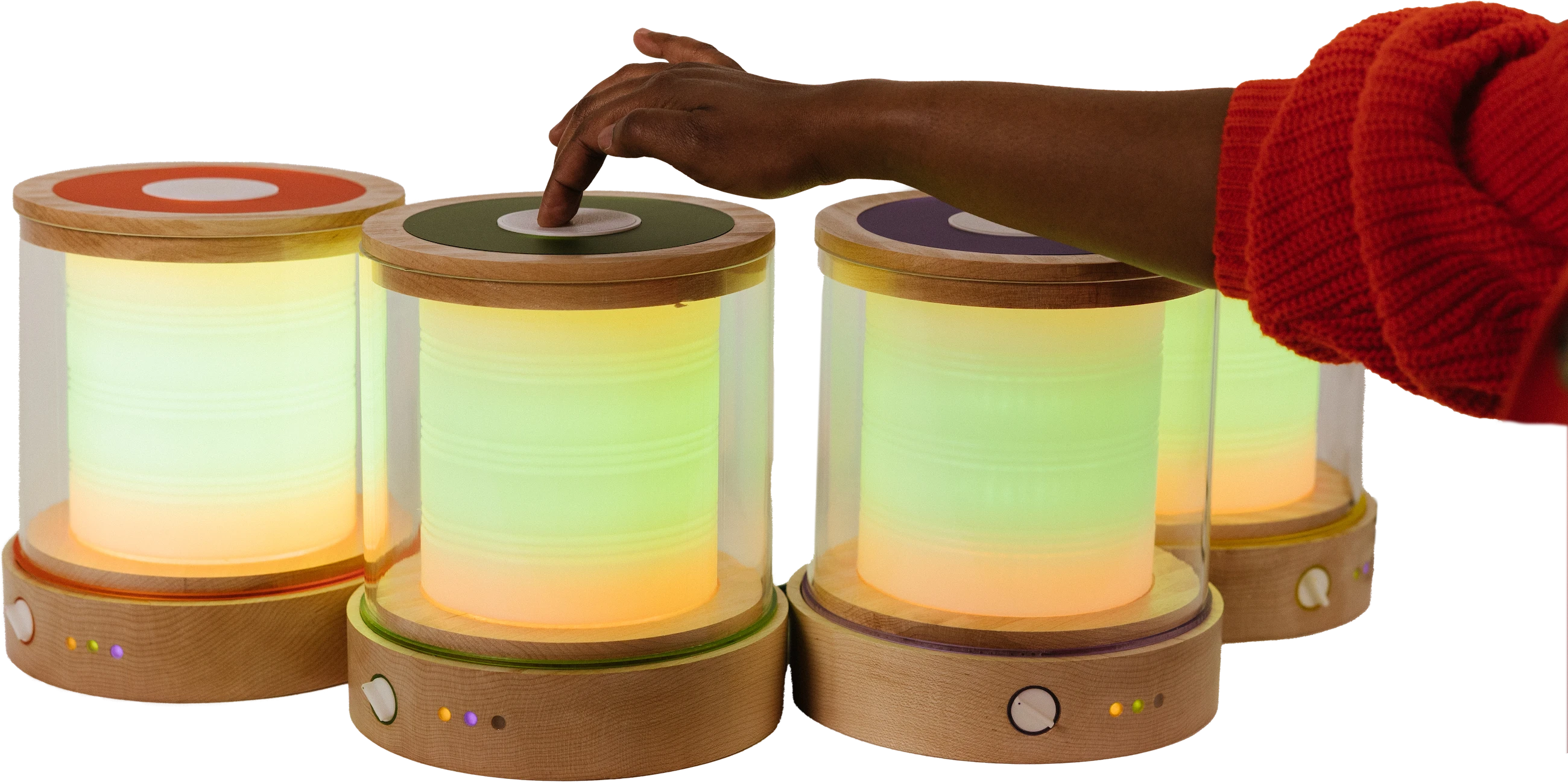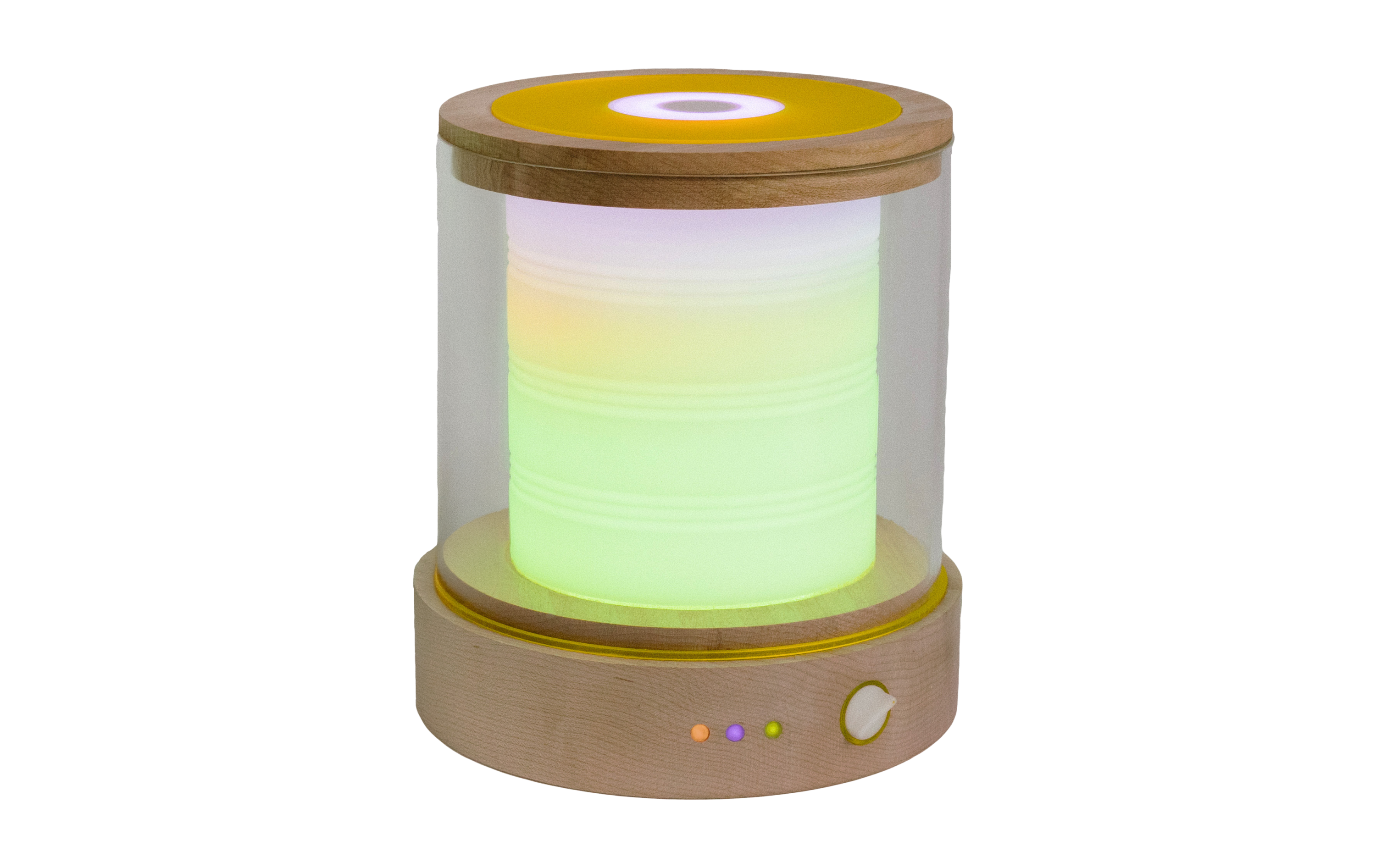Exploring shared music histories through co-listening with Queue Player.
Timeframe
2021 ↝ 2024Keywords
- Field Study
- Interaction Design
- Metadata
- Research Product
- Research Through Design
- Slow Technology
- Domestic Technology
Outcome
-
↬
Crafted a small batch of four refined Queue Player research products
-
↬
Four deployed Queue Players
-
↬
Six week Field Study
-
↬
Novel Temporal Interaction Design
-
↬
Paper and Video Showcased at CHI 2025
The Core Idea

Queue Player slowly reveals songs from a social group’s collective listening history, inviting reflection and shared discovery through the simple act of tapping a tempo.
Design Process
Currently, people’s music streaming histories accumulate into vast digital archives, yet these archives remain largely inaccessible or seldom shared in meaningful ways with others. How might shared reflection and social connection be supported through new ways of exploring and co-listening to this collective listening history? Queue Player is a tangible music player that lets groups of close friends navigate their combined archives by tapping a tempo, synchronizing playback across distance and revealing music from their pasts in ways that foster anticipation, intimacy, and moments of social bonding.
We integrated a piezoelectric vibration sensor, LED strips, and an audio board with a Raspberry Pi to enable Queue Player’s tap detection, song queue, tempo feedback, and synchronized audio output.
Queue Player’s materials comprised of CNC-milled maple wood for a wooden base and top, resin and 3D printed inserts, laser cut frosted acrylic, and a clear acrylic tube. The long-lasting qualities of these materials helped to construct a robust and high-quality product.
Interaction Design
By tapping a steady tempo on the top of their Queue Players device, users can navigate to different parts of their collective song archive, surfacing tracks that match the tempo they set. This approach allows listening across time—out of chronological order—creating an ongoing, evolving experience of discovery and reflection.
Explore Queue Player

Users tap a steady tempo to add it to the queue. The interface pulses the color of the user who tapped the current tempo.
Four glowing sections show upcoming songs to be played, with the top section indicating the currently playing song. Colors represent users (orange, yellow, green, violet), and gradients indicate songs heard by multiple users in the past. Dimmed sections indicate a new upcoming tempo.
Small colored lights indicate who is currently co-listening. These turn on and off in real-time as users become active or inactive during listening sessions.
Turning the knob to the right turns the power on and increases volume. Turning it fully left turns the power off. Once on, song playback syncs with other active Queue Players.
Long-Term Queue Player Field Study
Study Goals
We aimed to ① Consider how participants might use Queue Player as an extension of –not replacement for—their individual and social listening habits as well as ② Understand how Queue Player might mediate social connection with close-knit groups over distance, through synchronicity and tangibility.
Research Process
We hand crafted a small batch of 4 Queue Player research products and put them into the separate households of 4 close friends for 6 weeks. The combined archive spanned up to a decade of digital music listening history across users and contained 66,270 unique songs.
All four Queue Players were sent out wrapped in protective bubble wrap along with an instruction booklet that illustrates how Queue Player works.
Queue Players were placed in users’ homes in spaces where they could easily observe and interact with them. We held weekly listening sessions so that users could intentionally co-listen.
At the end of the study, participants were given a zine showing how many songs in the archive were shared between them.
Participant Stories
Outcomes & Implications
We designed Queue Player to explore how a close-knit social group could collectively explore their music listening histories through a unique tangible device. By materializing these digital archives, Queue Player offers new ways of navigating not only songs listened to in the past but the experiences, emotions, and memories tied to them. Tempo was used as a way to gradually reveal songs, allowing users to re-experience their music beyond conventional filtering methods like by genre or artist. Queue Player encourages focused attention on both one’s own and others’ listening histories, supporting reflection, anticipation, and shared discovery as the song queue unfolds. This research demonstrates how making digital music histories materially present in daily life can foster reflection on the past and, when combined with others’ data, promote social bonding and intimacy. It also contributes another step toward understanding how the slow technology philosophy can be extended and advanced in design practice and field research.
Queue Player: Investigating Distributed Co-Listening Experiences for Social Connection across Space, Time, and Tempo
- Samann Pinder,
- William Odom,
- Min Yoo,
- Ayush Misra,
- Henry Lin,
- Carman Neustaedter,
- Sam Barnett
Exploring distributed co-listening experiences through tempo-based interactions with Queue Player
Queue Player: Co-listening to Promote Social Connection and Reflection
Research Products and Time: When, For How Long, and Then What?
- Arne Berger,
- Stephan Hildebrandt,
- Albrecht Kurze,
- William Odom,
- Tom Jenkins,
- James Pierce,
- David Chatting,
- Doenja Oogjes,
- Sara Nabil,
- Andy Boucher,
- William (Bill) Gaver
Acknowledgments
-
↬
The Natural Sciences and Engineering Research Council of Canada (NSERC), the Social Sciences and Humanities Research Council of Canada (SSHRC), the Canada Foundation for Innovation (CFI), and MITACS Globalink Research Award.



